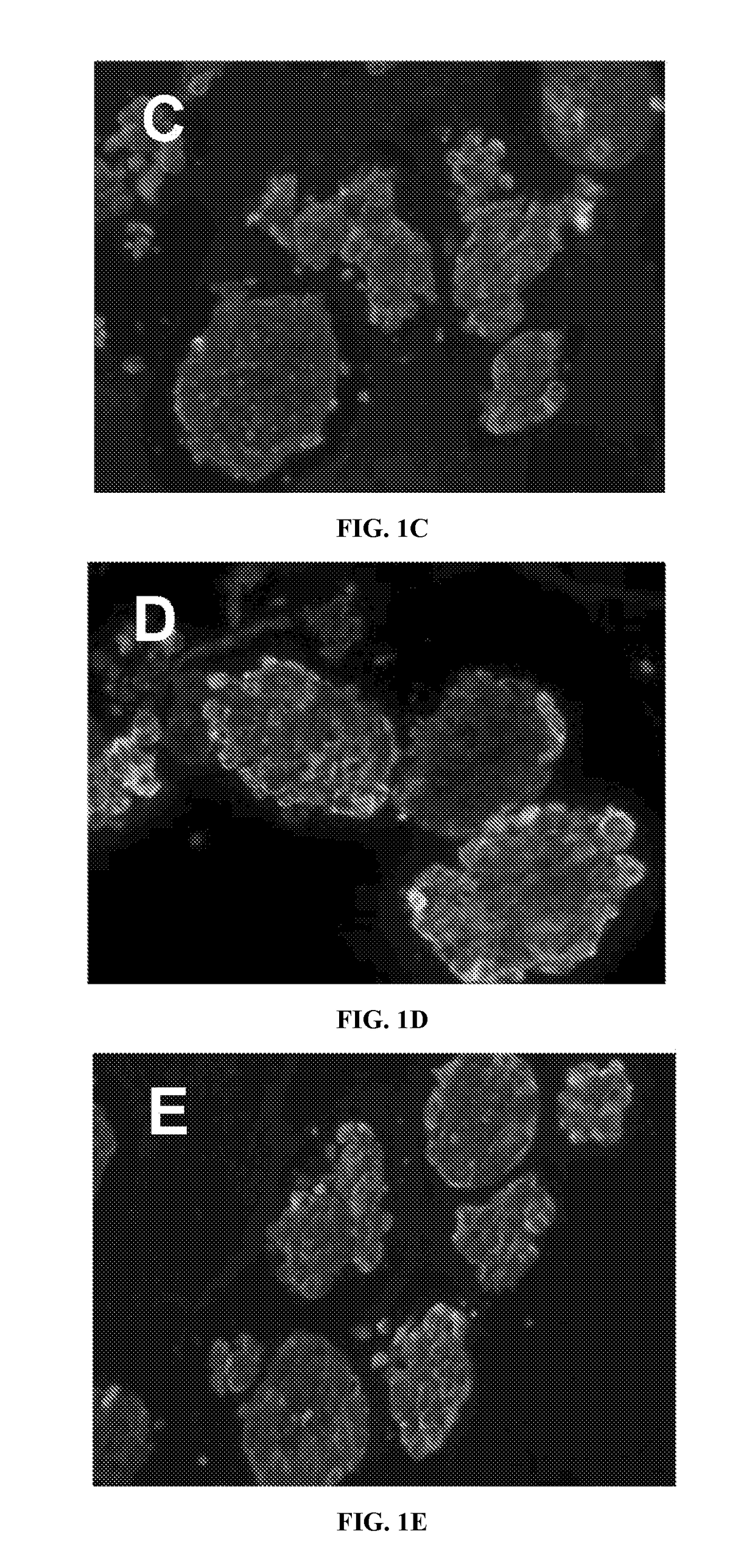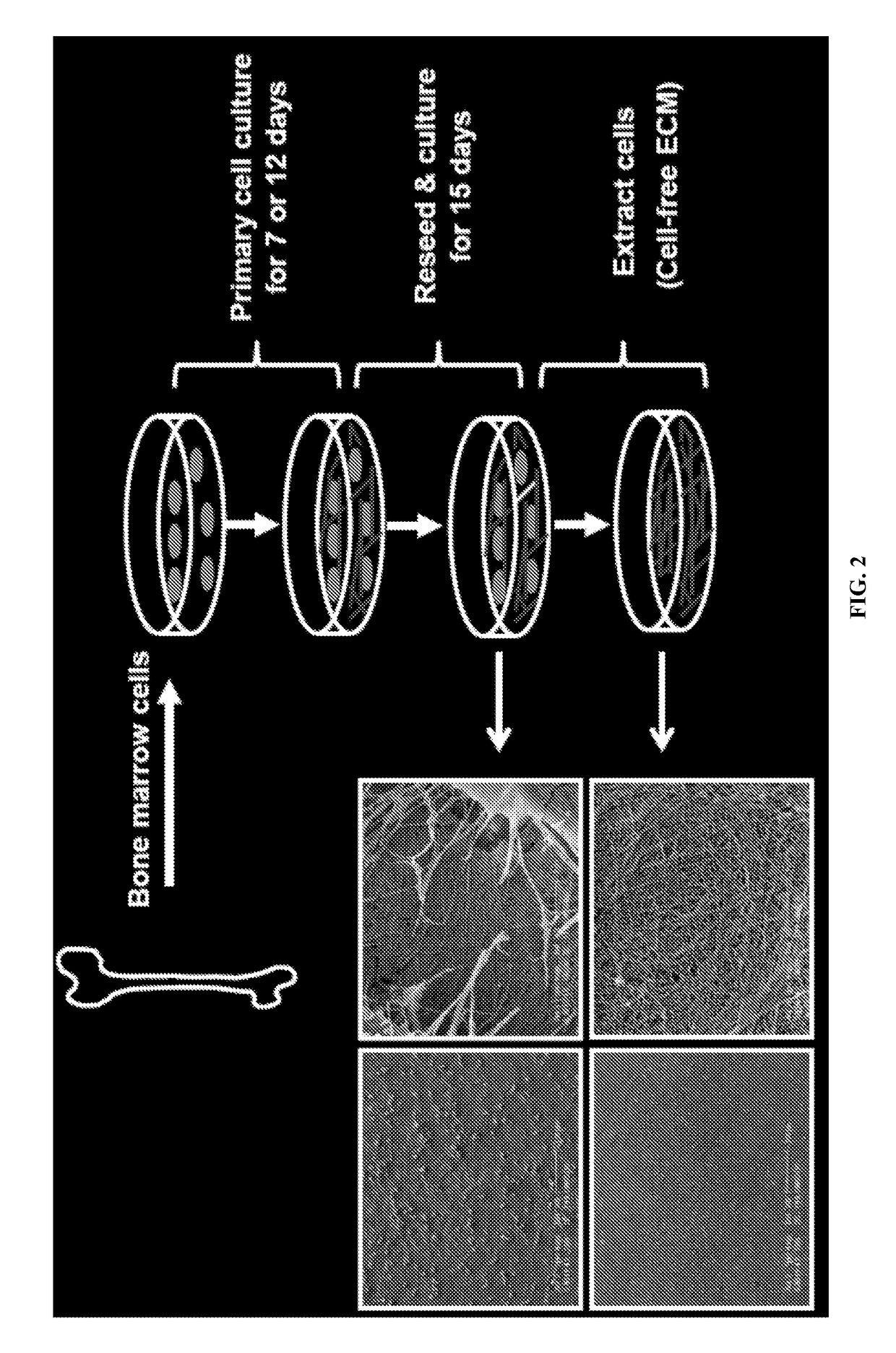Three-dimensional scaffold culture system of functional pancreatic islets
a technology of pancreatic islets and scaffolds, applied in the field of cell biology, can solve the problems of critical donor shortage, 10% of patients remaining insulin independent, and current treatments that neither cure the disease nor reverse the complications of the diseas
- Summary
- Abstract
- Description
- Claims
- Application Information
AI Technical Summary
Benefits of technology
Problems solved by technology
Method used
Image
Examples
example 1
Culturing Human Pancreatic Islets on ECM-BM
[0053]Recently, it has been reported that native extracellular matrix (ECM), generated by bone marrow (BM) cells (BM-ECM), enhanced the attachment and proliferation of human and mouse bone marrow-derived mesenchymal stem cells (BM-MSCs) (Chen, et al., 2007; Lai, et al., 2010). Herein the inventors disclose that using BM-ECM to culture human pancreatic islets allow one to retrieve a larger number of high quality, insulin producing, human pancreatic islets than possible using tissue culture plastics (TCP) (FIG. 1).
[0054]Methods:
[0055]Native extracellular matrix (ECM), generated by bone marrow (BM) cells, was prepared as described below in Example 2 and in Chen, X. D, et. al. 2007, and Lai, Y, et al. 2010. FIG. 2 illustrates a general overview of the procedure. FIG. 5 is scanning electron microscopy figures of the structure of the SFS as prepared by the procedures. FIG. 6 is scanning electron microscopy figures of the structure of the BM strom...
example 2
Synthesis and Characterization of BM-ECM on TCP
[0061]A tissue-specific three-dimensional environment was developed using SFS, with varying degrees of porosity and interconnectivity, and “coated” with native BM stromal cell-derived ECM.
[0062]Synthesis of BM-ECM on TCP:
[0063]SFS is prepared using a previously described technique (Nazarov, et al., 2004; Sofia, et al., 2011). Briefly, Bombyx mori cocoons were purchased from Paradise Fibers (Spokane, Wash.) and processed to remove sericin from the silk fibroin. The silk fibers were dissolved in 9.5M LiBr, dialyzed vs. water, and lyophilized. The samples were then rehydrated, sonicated, poured into Teflon molds, and lyophilized to create thin films. The protein structure of the resulting silk film were converted from α-helix to β-sheet by treatment with methanol, followed by washing and sterilization before use. A salt leaching process was used, after the last lyophilization step, to produce scaffolds of varying pore sizes and interconnec...
example 3
Characterization and Comparison of Rat Pancreatic Islets Cultured on BM-ECM or TCP
[0068]The efficacy of the ECM-SFS culture system in promoting pancreatic islet attachment, growth, and differentiated function was determined by culturing rat pancreatic islets on rat or human BM-ECM and compared to those cultured on TCP. BM-ECM with varying pore size and interconnectivity can also be compared.
[0069]Preparation of Rat Pancreatic Islets:
[0070]Inbred Lewis or Wistar-Furth (WF) rats (250-300 g) were purchased from Harlan (Dublin, Va.) and used to obtain islets for allograft and isograft. Pancreatic islets were harvested using collagenase XI (1 mg / ml) (Roche, Ind.) perfusion through the common bile duct and purified by continuous-density Ficoll gradient (Carter, et al., 2009). 500 to 700 islets / pancreas with ˜90% purity (FIG. 8A) were isolated. Viability of the purified islets was about 85% using Acridine orange (AO) / propidium iodide (PI) staining (live islets stain green with AO; dead isl...
PUM
| Property | Measurement | Unit |
|---|---|---|
| diameter | aaaaa | aaaaa |
| height | aaaaa | aaaaa |
| height | aaaaa | aaaaa |
Abstract
Description
Claims
Application Information
 Login to View More
Login to View More - R&D
- Intellectual Property
- Life Sciences
- Materials
- Tech Scout
- Unparalleled Data Quality
- Higher Quality Content
- 60% Fewer Hallucinations
Browse by: Latest US Patents, China's latest patents, Technical Efficacy Thesaurus, Application Domain, Technology Topic, Popular Technical Reports.
© 2025 PatSnap. All rights reserved.Legal|Privacy policy|Modern Slavery Act Transparency Statement|Sitemap|About US| Contact US: help@patsnap.com



